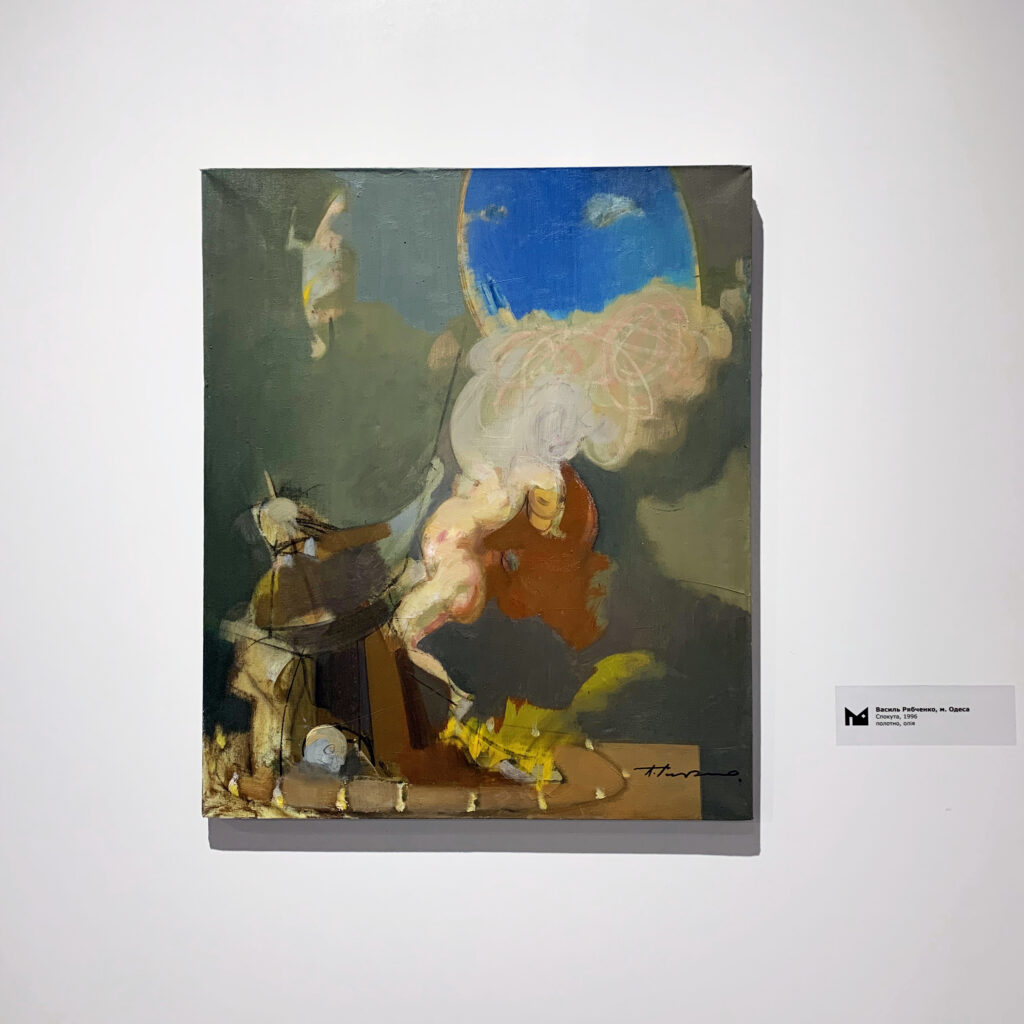
Vasiliy Ryabchenko’s painting is based on an interesting combination of features of classical traditions and stylistic rhetoric of modernism. It captures the aesthetic, intellectual, psychological vibrations, the power of the craft, sharp-individual techniques of expression. The Temptation (1996) painting, which recently appeared in the KMCAU’s exposition, is a kind of reflection of the artist on the issue of rethinking established artistic achievements. The combinatorics of recognizability of shapes and volumes with the conditionality of color fluidity, blurred contours in the sequence of the pictorial series reaches here, on a very small plane, the real enchantment of the unreal view. It is the one that adds important emphasis in revealing the main theme. The obsessive-seductive allusions of the hermit ascetic, who took the vow of purity, are reflected in Vasiliy Ryabchenko’s paintings not only as a classical motif borrowed from art history but also as the author’s attempt to portray a popular plot in a new expressive language. At the same time, it is a way for the artist to motivate his viewers to understand the world, man in this world, his involvement in the eternal confrontation of forces of good and evil, finding true answers to always relevant issues in the realm of spirit. The author seems to visualize his own hypotheses on this canvas. Conducting a kind of dialogue with the old masters, he creates his own composition, detached from the traditional unification and certainty of iconographic techniques. And the drama of the real emotions of his hero conveys in the shimmering vague structure of painting, as if trying to snatch from nothingness, to detain the vanishing materiality of living flesh. Vasiliy Ryabchenko’s painting “The Temptation” adds another facet to the idea of the specific features of Odessa’s art.
Zoia Navrotska
